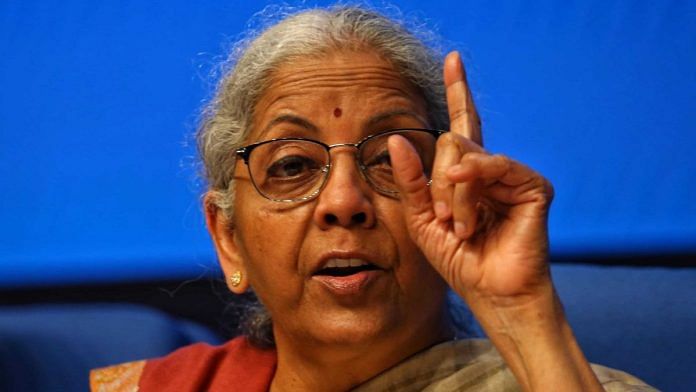Ms Sitharaman’s Budget for 2025-26 had projected a fiscal deficit of 4.4 per cent of GDP. It was riding on a net tax revenue growth of about 11 per cent and a containment of expenditure growth to about 7 per cent. The overall revenue receipts growth projections for the current year are reasonably conservative and broadly in line with the growth achieved last year. Yes, if the pace of economic activity in 2025-26 slows a bit, as is feared, revenue receipts will also take a hit. But the shortfall will be relatively small and will most likely be made good by gains from a higher transfer of surplus from the Reserve Bank of India (RBI), which now appears almost certain, given the central bank’s operations so far.
A bigger revenue cushion perhaps exists in the government’s collections of the goods and services tax (GST). Since GST compensation cess collections in the wake of the Covid pandemic were not adequate to compensate the states in 2020-21 and 2021-22, the Union government had formalised a special arrangement with the RBI to borrow about ~2.7 trillion in two tranches. This money was used to meet the states’ compensation shortfall till June 2022, after which the compensation facility came to an end. However, the levy of the compensation cess was extended till March 2026 and it was agreed that the amount collected from July 2022 onwards would be used by the Centre to repay the loan facilitated by the RBI.
Total collections from the GST compensation cess from July 2022 to March 2025 are estimated at Rs 3.82 trillion. This should be more than enough to repay the entire loan well before the end of March 2026, even after adding the interest burden on account of the Rs 2.7 trillion loan. In other words, in the eventuality of a revenue shortfall, the government, after consultation with the states, could easily use the excess collections under this head for meeting its own revenue shortfall. States would agree to such an arrangement as they too would benefit.
It would thus appear that the government’s revenues should largely remain under control despite some pressure on account of a slower pace of economic activity. But the impact of the border conflict is likely to be more pronounced on the expenditure side. A tense border means an increased pressure on the exchequer to release more funds for bolstering the country’s defence preparedness.
For many years in the past, the government has kept a tight leash on its defence expenditure. In 2024-25, total defence expenditure (minus pension liabilities) rose by just 3.4 per cent. For the current year, defence expenditure is slated to go up by 7.6 per cent. But the question that arises in the wake of last week’s escalation of tensions at the border is whether this increase will be too little to meet the needs for strengthening India’s defence preparedness and military infrastructure.
In the last few years, India’s defence expenditure has stayed at around 1.5 per cent of GDP. This used to be much higher in the past. For instance, the share of defence expenditure in GDP in the year of the Kargil war was 2.4 per cent. Given what happened on India’s western border last week, it is now almost inevitable that the government will initiate efforts to ramp up defence expenditure to raise its share in GDP to a level closer to at least what it was the last time India had a border clash. The pace of increase may be slow, but the direction of change appears to be beyond dispute.
This will have serious implications for the Union government’s fiscal consolidation road map. If the fiscal deficit target for 2025-26 has to be met, there are two options for the government. It can either change the composition of expenditure by reducing a bit of its proposed capital expenditure to provide for higher defence expenditure. Or it can let the fiscal deficit reduction plan take a temporary pause. Its total debt is expected to decline to 56 per cent of GDP in 2025-26, compared to 57 per cent in 2024-25. Perhaps allowing a minor slippage in the fiscal deficit reduction plan is a better option than curtailing capital expenditure, given the latter’s growth-multiplier effect. A border conflict in any case provides the government a justification for a minor postponement of target dates for lowering the deficit under its fiscal consolidation framework.








